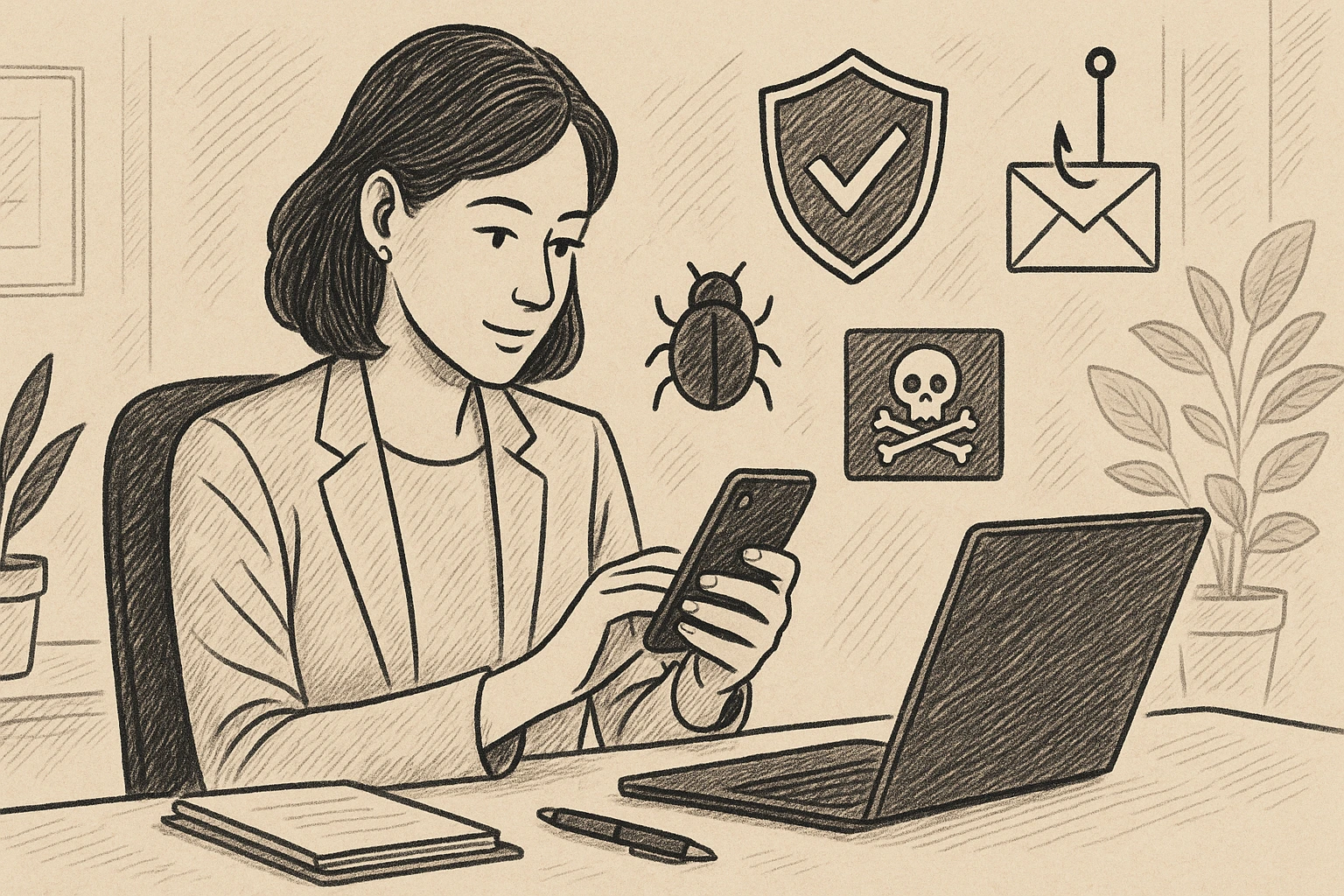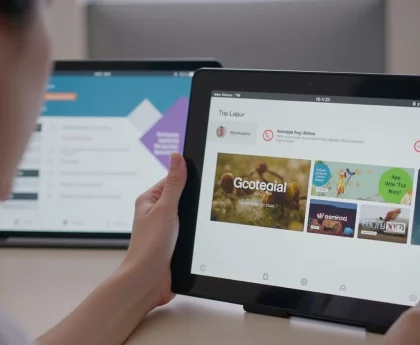In today’s hyper-connected world, your smartphone is more than a communication device—it’s your bank vault, photo album, calendar, and personal assistant rolled into one. But this convenience comes with significant risks. From malware attacks to phishing scams, modern digital threats are sophisticated and constantly evolving. That’s why building a solid foundation for smartphone security isn’t optional anymore. We must learn a lot of safety measures — from recognizing phishing from glance to knowing how to refresh airtag location on iPhone. Here are top-10 safety rules for your everyday usage.

1. Lock Down Your Device with Strong Passwords and Biometrics
Why It Matters:
Your phone’s lock screen is the first line of defense. Weak passwords—like “123456,” “0000,” or your birthday—are the digital equivalent of leaving your front door wide open. Yet millions still use them.
What to Do:
Set a unique, complex password that includes:
- A combination of upper and lowercase letters
- Numbers
- Special characters (like # or $)
Better yet, pair this with biometric authentication. Whether it’s a fingerprint, facial recognition, or iris scan, biometrics significantly reduce unauthorized access—even if someone steals your phone. Most Android and iOS devices now support this feature, and enabling it takes just a few taps in your settings.
2. Enable Two-Factor Authentication (2FA) Everywhere You Can
Why It Matters:
Even the strongest password can be stolen. That’s where Two-Factor Authentication comes in. With 2FA, even if someone gets your login credentials, they won’t get in without a second verification step—usually a code sent to your phone or email.
How It Helps You:
According to Microsoft, 2FA blocks 99.9% of automated hacking attempts. It’s now supported by nearly every major platform: Google, Apple, Facebook, Instagram, Amazon, banking apps—you name it.
Pro Tip:
Use an authenticator app (like Google Authenticator, Authy, or Microsoft Authenticator) rather than relying solely on SMS codes, which can be intercepted through SIM-swap attacks.
3. Keep Your Operating System and Apps Up to Date
Why It Matters:
Cybercriminals don’t break down doors—they sneak through windows. And outdated software is full of them.
What You Should Do:
- Enable automatic system updates on your iOS or Android device.
- Visit your app store weekly to check for and install app updates.
- Delete apps you no longer use—if you’re not using them, they’re not getting updated either, which means they could become security risks.
Behind the Scenes:
Updates often contain critical security patches. Skipping them can leave your phone vulnerable to zero-day exploits, which are bugs attackers actively exploit before developers can fix them.
4. Be Smart About App Permissions
Why It Matters:
That flashlight app asking for access to your microphone and contacts? That’s a red flag. Many apps request permissions they don’t genuinely need, either out of laziness or malicious intent.
How to Take Control:
- On iPhone: Go to Settings > Privacy & Security
- On Android: Go to Settings > Apps > App Permissions
Audit these settings regularly. Disable any access that isn’t essential to the app’s core function. If a calculator wants your GPS, it’s time to delete it.
Pro Tip:
Download apps only from the Google Play Store or Apple App Store, which have vetting processes. Avoid third-party APKs unless absolutely necessary.
5. Install Trusted Security Software
Why It Matters:
Antivirus isn’t just for PCs anymore. Modern smartphones face real threats: trojans, spyware, ransomware, and phishing attacks. A security app adds a powerful layer of defense.
Best Options (2025):
| App Name | Features |
| BitDefender Mobile | Real-time protection, anti-theft, app lock |
| Avast Mobile Security | Malware scanner, Wi-Fi security, call blocker |
| Kaspersky Mobile | App permission checker, anti-theft, web filter |
| Norton Mobile | Web protection, VPN, dark web monitoring |
These apps help you:
- Scan for and remove malicious apps
- Block dangerous websites and ads
- Locate, lock, or wipe your device remotely if it’s stolen

6. Avoid Public Wi-Fi—Or Use a VPN
Why It Matters:
Public Wi-Fi is one of the biggest threats to mobile security. Hackers often create fake hotspots or exploit open networks to intercept user data—everything from login credentials to credit card numbers.
Your Defense Options:
- Avoid public Wi-Fi unless absolutely necessary. Use your mobile data connection when possible.
- If you must connect, use a Virtual Private Network (VPN) to encrypt your connection.
Top VPNs for Smartphones (2025):
| VPN Service | Key Benefits |
| NordVPN | Fast servers, strong encryption, kill switch |
| ExpressVPN | User-friendly, secure protocols, wide server network |
| Surfshark | Unlimited devices, camouflage mode, ad blocker |
| Proton VPN | No-logs policy, based in Switzerland, free tier |
A reliable VPN creates a secure tunnel between your device and the internet—protecting your browsing, banking, and messaging from eavesdroppers.
7. Turn Off Location Sharing—Except When You Need It
Why It Matters:
Location data is one of the most sensitive pieces of information your smartphone transmits. Apps that continuously track your location can leak your routines, home address, and more—sometimes without your knowledge.
What You Can Do:
- Manually toggle off location services when not needed.
- Review app-specific access under:
- iOS: Settings > Privacy > Location Services
- Android: Settings > Location > App permissions
Reduce Risk and Save Battery:
Only enable location sharing for essential apps like navigation or ride-hailing. Disable access for games, social apps, or unknown utilities.
8. Prepare for Loss or Theft
Why It Matters:
Losing your smartphone is more than inconvenient—it can be catastrophic if your personal data falls into the wrong hands. But proactive steps can give you peace of mind and increase your recovery chances.
Essentials to Set Up:
- Enable built-in tracking features:
- Find My iPhone (Apple)
- Find My Device (Android)
- Activate remote lock and wipe capabilities in case recovery isn’t possible.
Recommended Tool: Number Tracker
Take your tracking game further with Number Tracker. This app lets you:
- Track your phone by number in real-time
- View location history
- Get alerts when the phone leaves a set area
This is especially useful if:
- You’re frequently in public spaces
- You have kids with their own devices
- You want a reliable backup in case default trackers fail
Pro Tip:
Test your tracking tool in advance. It’s better to confirm that everything works while your device is still in hand, rather than when it’s missing.
9. Watch Out for Phishing and Scam Messages
Why It Matters:
Phishing is one of the oldest tricks in the hacker playbook—and still one of the most effective. A fake text message or email can lure you into clicking a malicious link or submitting personal information.
What to Look For:
- Spelling errors or awkward grammar
- Urgent messages prompting “immediate action”
- Suspicious sender addresses or phone numbers
- Links that don’t match the supposed source
Your Smart Response:
- Never click on unexpected links.
- Don’t download attachments from unknown sources.
- If a message seems suspicious, go directly to the official app or website instead of clicking.
Bonus Tip:
Install a browser security extension or enable built-in phishing filters on your mobile browser.
10. Regularly Back Up Your Data
Why It Matters:
Even the best digital defense can’t guarantee your smartphone won’t be lost, stolen, or damaged. Without backups, your data could be gone forever.
Best Backup Options:
| Platform | Method | What It Covers |
| iOS | iCloud / iTunes | Photos, messages, apps, device settings |
| Android | Google One / Google Drive | Contacts, app data, call history, photos |
| Both | External tools (e.g., Dropbox) | Documents, multimedia, app folders |
How Often?
Enable automatic daily or weekly backups. Make a habit of checking your backup status regularly—especially before software updates or long trips.
Why These Tips Work Together
Every tip above serves a distinct purpose, but together they form a layered defense strategy—also known as “defense in depth.” For example:
- A strong password blocks access.
- If it’s breached, 2FA still stops the hacker.
- If your phone is stolen, Number Tracker helps locate it.
- If it’s unrecoverable, your cloud backup restores your data.
This layered model mirrors what cybersecurity professionals use to protect enterprise systems. Now, you’re bringing that same rigor to your personal tech.
Safety as a Lifestyle: Simple Habits to Keep
Your goal isn’t perfection—it’s awareness. With just a few new habits, you can dramatically reduce your exposure to digital risks:
- Think before you tap: That link, that download, that app—pause and evaluate.
- Review settings monthly: Check app permissions, update passwords, and audit backups.
- Teach others: Help friends, kids, or coworkers use these same practices. Security spreads through shared awareness.
Treat your smartphone like your wallet: you wouldn’t leave it open on a park bench, so don’t leave it unprotected in digital spaces either.
Bonus Tool Highlight: Number Tracker for Peace of Mind
If you take one extra step from this guide, let it be adding Number Tracker to your digital toolbox. This app does more than locate lost devices:
- Tracks phones by number
- Records and displays location history
- Sends geofence alerts when a device moves outside set boundaries
- Works as a discreet safety net for kids, seniors, or travel companions
Whether you’re managing a busy family or guarding a personal device, Number Tracker adds precision and peace of mind to your mobile security setup.
Smartphones are brilliant tools—but only when used with intention. By taking the time to secure your device, you’re not just protecting files or photos—you’re protecting your identity, your privacy, and your peace of mind.
Security isn’t about fear. It’s about empowerment—knowing that your digital life is under your control.
So, next time you unlock your phone, remember:
You’re not just checking notifications. You’re guarding a vault.



